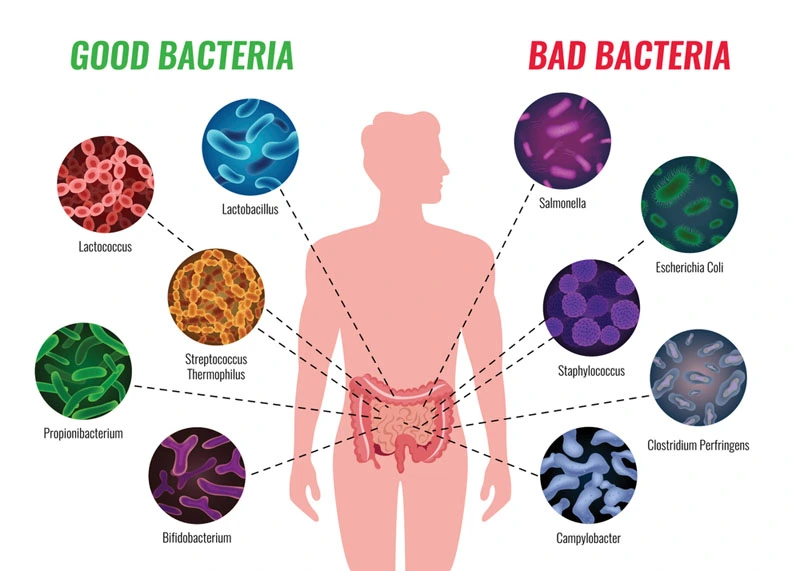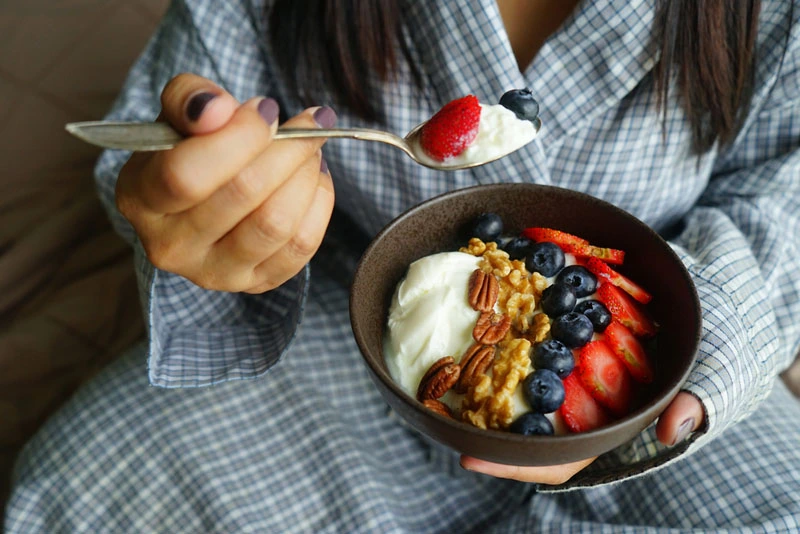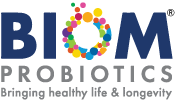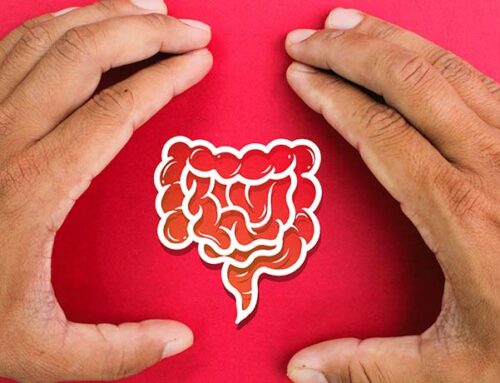Imagine having an army of millions within you, all working tirelessly to boost your health, mood, and overall well-being. That’s not science fiction – it’s your microbiome. This expansive community of bacteria that resides in our gut is more powerful than you may think. Switching to the right diet can nourish this internal ecosystem and unlock many health benefits. Ready to break the chains of mundane health woes? It’s time to dive deep into the science of our incredible microbiome and harness its power through what we eat.
The microbiome diet is a three-phase program aimed at helping you restore gut health by promoting a healthy balance of gut bacteria. This can lead to improved digestion, reduced inflammation, decreased anxiety, improved brain function and mood boosted metabolism, eliminated cravings, and weight loss. The three phases focus on removing unhealthy bacteria from your gut, restoring good bacteria with nutrient-dense foods, and maintaining a healthy balance through long-term dietary changes.
Nature of the Microbiome
The microbiome is a complex ecosystem comprising trillions of microorganisms such as bacteria, fungi, viruses, and protozoa. These microorganisms live in various parts of the human body, including the gut, skin, mouth, and reproductive system. The microbiome plays a critical role in overall health by influencing digestion, immune function, metabolism, and mental health.
One way to think about the microbiome is like a garden. Just as a garden has different plant species that work together to create a healthy and balanced environment, the microbiome also requires various microorganisms to function properly. When the balance of microorganisms within the microbiome is disrupted, it can lead to health issues such as digestive problems, allergies, autoimmune diseases, and even obesity.
Think of it like this: Imagine your gut as a vast garden bed full of different plants. Some are good for you, and some are not so good. If you only water and fertilize certain plants while ignoring others entirely, then eventually, the unhealthy ones will take over and prevent the healthy ones from thriving. The same principle applies to your gut’s microbiome.
Numerous studies have shown how crucial a healthy microbiome is to overall well-being. For example, research has demonstrated that having an imbalanced gut microbiome can interfere with the absorption of dietary nutrients, leading to malnutrition. Similarly, an unbalanced microbial community within the gut can promote inflammation throughout the body and increase the risk of developing chronic diseases such as heart disease, diabetes, cancer, and Alzheimer’s disease.
One significant finding came from a study on bowel cancer patients who had undergone radiation therapy; increased diversity of intestinal microbes was linked to improved outcomes in radiation-induced bowel injury among these patients. In addition to metabolic and inflammatory problems already mentioned as potential consequences of an unbalanced microbiome, research has also linked microbial imbalances to neurological disorders such as depression, anxiety, and autism.
Now that we understand the critical importance of maintaining a healthy microbiome let us delve deeper into the various microorganisms that make up the microbiome.
Statistics about Microbiome Diet
- As per a study published in 2020, an individual’s gut microbiota has more than 100 trillion bacteria of over 1000 various species.
- A 2018 clinical trial showed that adopting a high-fiber diet, as the microbiome diet suggests, can influence and increase the number of beneficial gut bacteria by up to 15%.
- The probiotic supplement industry, which is heavily associated with the microbiome diet, surpassed $35 billion in sales in 2015 and is predicted to reach $65 billion by 2024.
The Various Microorganisms
As mentioned earlier, the microbiome comprises various types of microorganisms. The most abundant and well-studied members of the gut microbiome are bacteria. These bacteria come in hundreds of different species, each with its unique functions within the gut ecosystem. For instance, some bacterial strains can help digest fiber and other complex carbohydrates that our bodies cannot break down independently. Other strains help synthesize vitamins such as Vitamin K and folic acid.

Beyond bacteria, fungi also play a vital role in shaping the gut microbiome. Some fungal species within the gut could cause diseases, while others prevent fungal overgrowth by controlling harmful pathogens’ growth.
Viruses are another type of microbe present in the microbiome that’s often forgotten or overlooked. These viruses mainly attack bacteria rather than human cells. However, these attacks are beneficial — it helps kill off unwanted bacteria strains, promoting diversity and health within the gut ecosystem.
Not all microorganisms in our intestinal tract are friendly; some are harmful and can cause infections if allowed to multiply unchecked due to an imbalance in the gut microbial community. In this way, a diverse population of beneficial microbes is essential for keeping the bad actors at bay.
While antibiotics are powerful tools against harmful microbes, they can also wipe out beneficial ones, leading to dysbiosis (an imbalance in the gut) and side effects ranging from diarrhea to more serious issues like inflammatory bowel disease (IBD). Scientists have recently explored probiotics and prebiotic supplementation to promote a healthy gut microbiome indirectly.
Many studies have shown that probiotics live bacteria that promote gut health can help reduce the risk of antibiotic-associated diarrhea, ease digestive symptoms in those with inflammatory bowel disease (IBD), and potentially enhance the immune system’s strength.
Now that we’ve familiarized ourselves with the different types of microorganisms present within the microbiome let’s take a closer look at how you can promote these microorganisms’ growth and overall health through diet.
Unlocking Health with Microbes
The microbiome is a vital component of our overall health and well-being. The trillions of microorganisms living within our bodies help to break down food, synthesize certain nutrients, and even support our immune system. When this ecosystem gets out of balance, it can lead to various health problems.
For example, an overgrowth of harmful bacteria in the gut can cause inflammation throughout the body, leading to chronic diseases like diabetes, heart disease, and arthritis. Likewise, a lack of diversity within the microbiome has been linked to obesity and other metabolic disorders.
Fortunately, there are ways to unlock the power of your microbiome and promote better health. One option is using probiotics – live bacteria that you can ingest to help promote healthy gut flora. Probiotic supplements have been shown to be effective in treating various digestive issues, including diarrhea, irritable bowel syndrome (IBS), and inflammatory bowel disease (IBD).
Another option is to incorporate prebiotic foods into your diet. Prebiotics are non-digestible fibers that fuel the growth of beneficial bacteria in the gut. Examples include onions, garlic, asparagus, bananas, and whole grains.
Ultimately, by promoting a healthy microbiome through probiotics and prebiotics, we can improve our overall health and well-being.
For example, studies have shown that women who took probiotics during pregnancy had lower rates of gestational diabetes and postpartum depression. In another study involving elderly adults with Alzheimer’s disease, those who received probiotics experienced improvements in cognitive function compared to those who did not receive treatment.
In addition to these benefits for specific conditions or populations, maintaining a healthy microbiome has been linked to many other positive health outcomes. These include improved digestion and nutrient absorption, better mood regulation, enhanced immune function, and even reduced inflammation throughout the body.
Achieving Balance with Diet
While probiotics and prebiotics can help promote a healthy microbiome, it’s also essential to maintain a healthy balance of gut bacteria through diet. This is where the microbiome diet comes in – a three-phase program designed to improve gut health and promote weight loss.
During phase one of the Microbiome Diet, participants eliminate foods that can cause inflammation or an imbalance in gut bacteria, such as grains, dairy, and sugar. Instead, they focus on non-starchy vegetables, fermented foods, and grass-fed meats.
Phase two adds back previously restricted foods like dairy, eggs, and gluten-free grains. Participants are encouraged to eat four meals per week that include these foods.
Finally, phase three is the maintenance phase, where participants strive for 70% compliance with the food list from phase one.
This diet aims to promote a diverse array of beneficial gut bacteria by providing them with the nutrients they need to thrive. We can achieve better overall health by eliminating processed foods and focusing on whole, nutrient-dense options like fruits, vegetables, and lean proteins.
However, critics argue that such restrictive diets are unnecessary for most people and may even be harmful. Additionally, these diets can be difficult to sustain long-term due to their strict guidelines. For this reason, many experts recommend a more flexible approach when it comes to diet and gut health.
Still, incorporating more plant-based foods into your diet while reducing your intake of processed foods is a simple way to support a healthy microbiome. Other tips include eating slowly and mindfully to aid digestion and chewing your food thoroughly before swallowing.
Think of your microbiome as a garden: just as you would care for your flowers or vegetables by providing them with proper nutrients and removing any harmful weeds, you can do the same for your gut bacteria. You can promote better overall health and well-being by cultivating a healthy microbiome through diet and lifestyle changes.

Eating According to the Microbiome Diet
The microbiome diet is a popular three-phase program to restore gut health and promote weight loss. Specific foods are emphasized during each phase, while others are temporarily eliminated or avoided altogether. While it may seem challenging to stick to such strict guidelines, the effort is worth it in terms of overall health benefits.
A healthy balance of gut bacteria is linked to better digestion, reduced inflammation, lower anxiety levels, and improved brain function and mood. A balanced gut microbiome is also said to boost metabolism and help with weight loss by eliminating cravings and helping the body process food more efficiently.
In Phase 1 of the microbiome diet, you must eliminate all types of toxins and unhealthy foods that may trigger inflammation or disrupt your gut imbalance. This includes avoiding all grains, dairy products, eggs, most legumes, starchy fruits and vegetables, packaged and fried foods, sugar-based food items, fillers, coloring agents, artificial sweeteners, some types of fats, and even certain types of fish and meat.
However, during Phase 2 of the diet plan, which lasts 28 days, you can add low-fat dairy products like milk and cheese back into your diet and gluten-free grains like quinoa or brown rice. Certain legumes like lentils or chickpeas may also be included again in Phase 2.
Remember that only four meals per week during Phase 2 can include some foods not recommended in Phase 1. Once you have completed Phases 1 and 2 of the microbiome diet plan successfully without too much difficulty following these guidelines (consistency is key!), you will be better equipped to maintain your results long-term in Phase 3.
While some critics argue that this kind of diet is extreme and not sustainable for many people, proponents of the microbiome diet claim that it ultimately benefits one’s health and well-being. The idea behind this approach is that temporary dietary changes are necessary to restore balance in the gut microbiome.
Identifying Supportive Foods
Eating supportive foods can go a long way in restoring balance to your gut microbiome. It is important to recognize that a high-fiber diet can affect the type and amount of bacteria in the intestines leading to the release of short-chain fatty acids with potential health benefits.
Some foods that are recommended on the microbiome diet include non-starchy fruits and vegetables, fermented foods (like kimchi and sauerkraut), grass-fed meats, wild-caught fish, and low-mercury seafood like shrimp or scallops.
Think of your gut as a garden and probiotics as seeds that need to be planted and watered (i.e., fed) regularly. If you don’t nourish your gut with support foods, “bad” bacteria may flourish unchecked, causing imbalance, inflammation, digestive problems, and other issues.
Avoid processed foods, sugars, high-fat items, and fried foods, which could outcompete good bacteria with unhealthy strains if eaten frequently. While probiotic supplements may be helpful in some circumstances, such as after using antibiotics or for certain medical conditions where an imbalance has occurred, treating such cases without consulting a doctor should not be done.
Incorporating supportive foods into your daily meals has never been easier. Many online resources are available with recipes using these types of ingredients that fit the requirements outlined in each stage of the microbiome diet, so there isn’t any excuse left not to take a step towards improving your health by following through with each phase!
Navigating the Phases of the Microbiome Diet
As mentioned earlier, the microbiome diet is a three-phase program intended to help restore gut health and aid in weight loss. However, navigating through the phases can seem daunting, especially with the extensive list of foods to avoid during phase one. But fear not, because with a little bit of planning and preparation, achieving a healthy balance of gut bacteria can be within reach.
During phase one, it’s essential to follow the food list carefully. Cutting out all grains, processed foods, and sugar might leave you feeling deprived, but remember, it’s only for 21 days. It helps to plan meals ahead and have a variety of options available. Instead of grains, use cauliflower rice or zucchini noodles as a substitute. Swap sugary snacks for fresh fruit or nuts. Adding spices and herbs to your meals can make them more flavorful without harmful ingredients.
The strictness of phase one may lead some to question its effectiveness in improving gut health. However, research has shown that limiting certain foods can significantly reduce inflammation levels in the body (which is linked to several chronic diseases), leading to an increase in beneficial bacteria in the gut.
While some people might succeed with the microbiome diet, others argue that limiting entire food groups could lead to nutrient deficiencies and even disordered eating patterns. However, it’s essential to note that phase two includes adding back dairy, eggs, gluten-free grains, and legumes to ensure a balanced diet.
Think of the microbiome diet as a reset button for your gut health. It’s like giving your body a chance to start fresh by removing harmful substances, replacing them with supportive foods, and allowing yourself time before slowly reintroducing other foods into your diet.
During phases two and three, it’s important to focus on incorporating non-starchy fruits and vegetables, fermented foods, grass-fed meat, and wild, low-mercury fish. Experiment with new recipes and try new foods to keep the diet interesting and enjoyable.
In conclusion, navigating through the phases of the microbiome diet may seem challenging at first. Still, with careful planning and preparation, achieving a healthy balance of gut bacteria can provide numerous health benefits. Remember that everyone’s body is unique, so finding what works best for you might take trial and error. Be patient and kind to yourself throughout the process. Unlocking the power of your microbiome takes time but is undoubtedly worth the effort.




